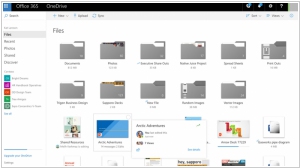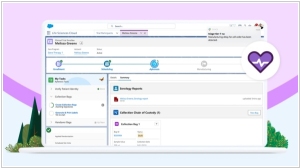Crashplan vs OneDrive
August 26, 2023 | Author: Michael Stromann
12
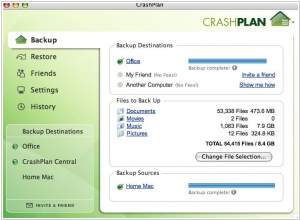
CrashPlan backup software offers the best way to back up and store personal, business and enterprise data securely - offsite, onsite and online in the Cloud. CrashPlan makes it easy to protect your digital life, so you can get back to what’s important in real life. Even when you step away, CrashPlan is busy at work protecting all your important files. Music, photos and documents are all automatically, continuously protected, so you can get back to whatever life throws your way.
Crashplan and OneDrive are both cloud-based backup and storage solutions, but they have distinct differences in terms of features, target audience, and use cases. Crashplan is primarily focused on providing robust and secure backup services for individuals and businesses. It offers features like continuous, automated backups, unlimited storage, version history, and data encryption. Crashplan is known for its emphasis on data protection and recovery, making it a suitable choice for users who prioritize backup and restoration capabilities. On the other hand, OneDrive is a cloud storage service offered by Microsoft, primarily integrated with the Microsoft Office suite and designed for collaboration and file sharing. It offers features such as file synchronization, document collaboration, and integration with other Microsoft services. OneDrive is popular among individuals and organizations that require seamless file access and collaboration across devices and platforms.
See also: Top 10 Online Backup services
See also: Top 10 Online Backup services
Crashplan vs OneDrive in our news:
2018. Microsoft added AI transcription to OneDrive and SharePoint

Microsoft is introducing video and audio transcription capabilities to OneDrive for Business and SharePoint, enhancing the accessibility of various digital content for users. This new feature utilizes AI technology from Microsoft Stream (previously known as Office 365 Video) to automatically generate a complete transcript of dialogues when viewing videos or listening to audio files. The resulting text data will be stored in the Microsoft Cloud, offering cost-effectiveness and enhanced security compared to relying on external transcription tools. Office 365 subscribers can expect to access this new service later in the year.
2017. CrashPlan shuts down its consumer cloud backup service to focus on business version
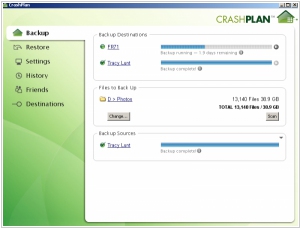
Popular cloud backup service CrashPlan has announced its decision to discontinue home subscriptions and shift its focus towards its business version, Code42. This move provides customers with a little over a year to find an alternative solution. Services like CrashPlan, Backblaze, and Carbonite have simplified the process of online backup, allowing users to subscribe and install a background app that automatically handles the backup process. CrashPlan has been a leading player in this market. However, the company has realized the potential for greater profitability by catering to larger enterprise customers. Hence, Code42 is providing ample time for its customers to transition away from CrashPlan, recognizing that uploading an entire hard drive can be a time-consuming process.
2015. Code42 snares $85M for its Crashplan

Code42, the company behind the enterprise backup tool Crashplan, has announced a significant funding round of $85 million. Originally developed as a laptop backup solution, Crashplan transitioned to cater to the enterprise market and has been experiencing rapid growth, with a yearly increase of 100 percent, as stated by Payne, a representative of Code42. One of the key advantages of Crashplan is its user-friendly nature, often requiring minimal IT involvement once implemented. Automatic file backups are performed, and Payne asserts that end users can restore files themselves in the majority of cases. The tool is platform-agnostic, extending its backup capabilities to Macs and Linux machines, and it leverages cloud storage, enabling users to retrieve their files from anywhere, including new devices. It's important to distinguish backup from storage: while storage involves keeping data on a hard drive, backup serves as a contingency plan in case of data loss, allowing users to recover their files. Crashplan focuses on backing up laptops and mobile devices rather than the entire data center.
2015. Microsoft gives Apple Users OneDrive For Business Access
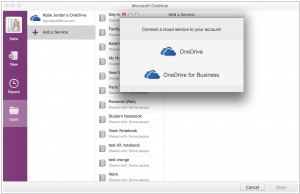
Microsoft has unveiled the initial public release of OneDrive for Business for Mac, enabling Mac users to perform the same tasks while accessing and utilizing their OneDrive files through the Mac Finder. Additionally, they can effortlessly handle and synchronize files, similar to the functionality provided by the existing Windows application. Notably, the OneDrive for Business client for Mac empowers users to access and use their files offline, eliminating the need for an internet connection. Moreover, the iOS mobile app grants users the convenience of accessing both their OneDrive for Business and OneDrive consumer accounts within a single app.
2014. Office 365 gets unlimited OneDrive storage.
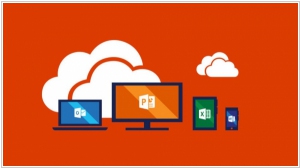
Starting today, customers of Office 365 Home, Personal, and University subscriptions will enjoy an increased storage capacity. Business customers will also receive unlimited storage in the near future, but for now, they have access to 1 TB of storage per user. With OneDrive, you can conveniently access your content across all your devices, collaborate on documents, and easily share files. While Google Drive, Box, Dropbox, and other cloud storage services have limitations on their storage capacities, OneDrive offers a significant advantage. If you reach the storage limit on those platforms, you have to purchase additional storage. Bitcasa, which was one of the few providers offering unlimited storage, recently discontinued that feature, giving Microsoft a substantial edge in terms of storage capabilities.
2014. OneDrive unifies access to business and personal files
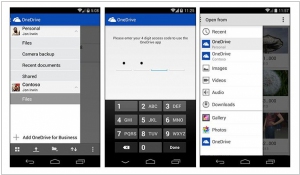
Microsoft's OneDrive is introducing enhanced functionality for mobile users, allowing them to conveniently access both business and personal files from their personal and work accounts. The application will intelligently differentiate between the two accounts, preventing any potential confusion, while still enabling users to view and back up files to both accounts. Additionally, Microsoft is implementing an additional layer of security by incorporating the option to set a four-digit PIN. This PIN can be utilized to restrict access to individual files or the entire app, bolstering overall data protection. These new features will be available in the Android app starting next week, with updates for the iOS and Windows Phone apps expected to roll out in the coming months.
2014. Microsoft OneDrive gives 15 Gb for free
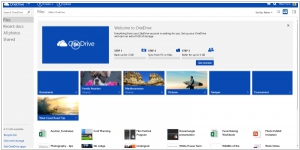
Microsoft has increased the amount of free cloud storage available in OneDrive to 15GB, a significant upgrade from the previous 7GB. For users requiring additional storage capacity, there is now an option to pay $1.99 per month for 100 gigabytes. Furthermore, Microsoft has announced that all Office 365 customers will receive 1TB of free storage. For instance, Office 365 Personal, priced at $6.99 per month, now includes nearly unlimited storage. When comparing these offerings to competitors, Google Drive provides 25GB for free and offers similar pricing structures, charging $1.99 per month for 100GB and $9.99 for 1TB. Apple grants 5GB for free and charges $0.99 per month for 20GB. Although there is no 100GB option, the rate for 200GB matches OneDrive's pricing at $3.99. Amazon Cloud Drive offers 5GB for free and provides 100GB for $4.1 per month. Therefore, while the price reduction by OneDrive may not significantly impact industry giants, it adds further pressure to third-party services such as Dropbox and Box.
2014. Microsoft renames SkyDrive to OneDrive
Microsoft has a penchant for renaming its applications and services, and the cloud storage and file sync service SkyDrive is no exception. Over the years, it has undergone various name changes, such as FolderShare, Windows Live Office, and Live Mesh. However, this upcoming name change is not merely a result of marketers fulfilling their job responsibilities. Rather, it stems from a legal dispute that was resolved last August when the British broadcasting company BSkyB successfully claimed ownership of the name "SkyDrive" from Microsoft. As a result, SkyDrive will soon (Microsoft has not provided an exact timeline) be rebranded as OneDrive, and the business version known as SkyDrive Pro, which is available to Office 365 and SharePoint 2013 users, will be known as OneDrive for Business. Currently, you can visit the OneDrive promo site where you have the option to provide your email address to Microsoft's marketing team.
2012. Microsoft launched SkyDrive for Android
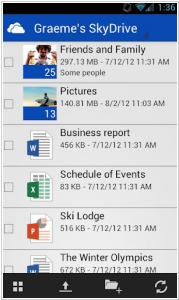
Earlier this month, Microsoft introduced a major update to its online file storage and sharing service, SkyDrive, implementing the Metro-Windows-8 interface. Today, the company has taken a step further by launching the mobile SkyDrive app for Android. This app allows Android smartphone and tablet users to access their files, including shared files, view and edit them using other applications, and seamlessly upload new and edited files back to the server. It's worth noting that SkyDrive's mobile application is also available for iPhone/iPad and Windows Phone users. Furthermore, SkyDrive comes pre-installed in Windows 8 by default. As a reminder, SkyDrive competes with services like Dropbox, Google Drive, and SugarSync, offering a generous 7 GB of free cloud storage, surpassing that of its competitors.
2012. New Office Web Apps add mobile touch interface, real-time collaboration
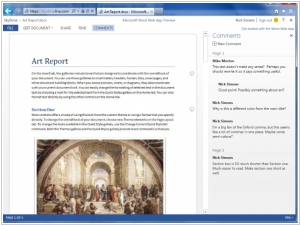
Microsoft started preview testing of the new version of its browser-based document editing applications Office Web Apps. Everybody can already join the preview on the SkyDrive or Office 365. The first thing that has changed - is the interface. It's now exactly like the upcoming Office 2013. And the main feature of this interface - is its adaption to the tablets with touch-screen. In general, the main objective pursued by Microsoft in this update - is to improve the performance of Office Web Apps on mobile devices (in mobile browsers). And the new mobile web interface for smartphones, is perhaps even better than its main competitor - Google Docs: ***

